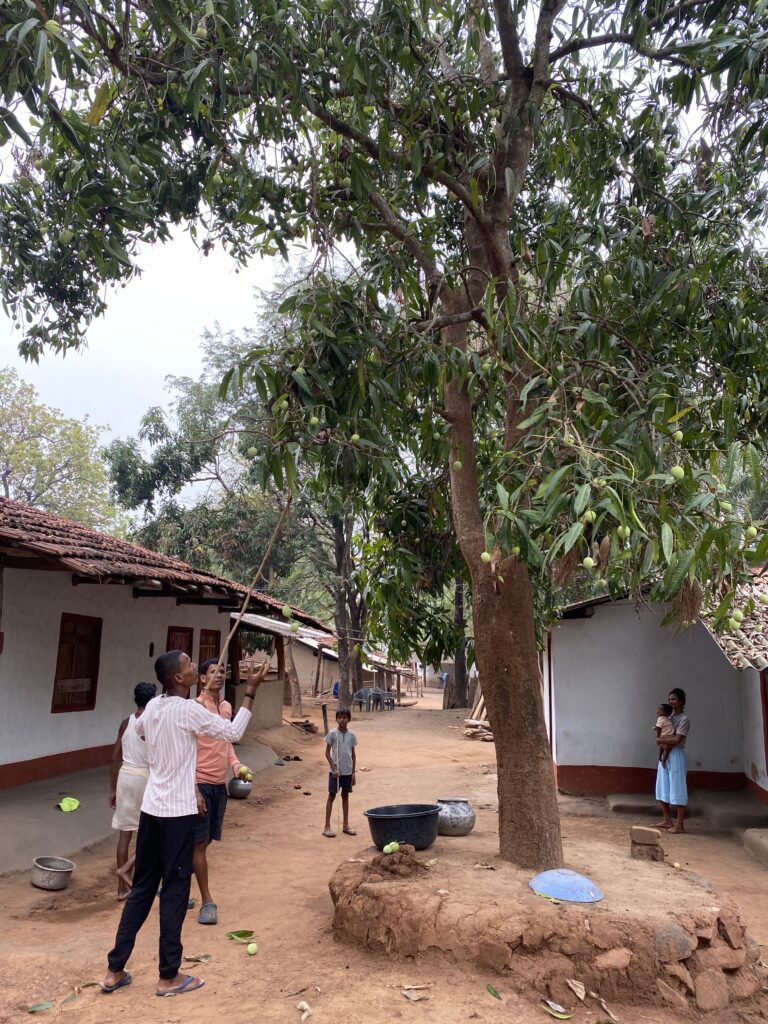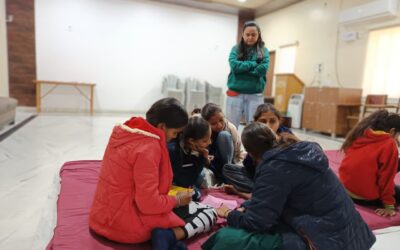The heat of Chhattisgarh wrapped me like a stifling embrace as I got off the bus, Garrett Hardin’s Tragedy Of The Commons ringing in my ears. Sukma in Bastar, with its deep forests and indigenous communities, seemed to be the last place where living in harmony with the natural world was possible. According to Hardin’s theory, if laws were not strictly enforced, people would become insane and destroy the earth’s resources out of greed. I had seen enough in my life to accept some validity to his theory.
Therefore, my initial doubts were challenged when I got introduced to the routines of these tribal villages. Instead of viewing them through a lens of doubt, I decided to let their narratives unfold without imposing my judgements.
An old man in a small store, named Vijay introduced me to the Mahua festival, which is a celebration of the tree and its blossoms. I discovered from Vijay’s descriptions that the community’s love of the forest was the true motivation behind the ceremony, not just commercial gain. Observing families gathering for the celebration and inhaling the sweet scent of Mahua blossoms, I started to understand the mutually beneficial association between the people and the surroundings.
As I learned more about the tribal community’s customs and traditions in Bastar, the story kept developing. Every revelation provided insight into their deep relationship with nature and their will to coexist.
One captivating example, shared with me by a colleague at Shiksharth, is a kind of unwritten pact. Every community took on the role of protector for a particular trio—an animal, a bird, and a tree—selected from the vibrant jungle. These chosen beings were left completely untouched. This was not a uniform practice; rather, it varied among the groups, creating a lovely protective mosaic throughout the ecosystem. This, I realized, was a profound understanding of the delicate balance of the forest.
My journey led me to a colleague from the Madkami tribe, a community nestled deep within the emerald embrace of the forest. He shared a captivating insight into their sacred trio – the embodiment of their totemic beliefs. The tortoise, the Madka Pitte bird, and the Kas tree. The Madkami tribe would traditionally avoid harming or disrespecting any of these totemic figures. They might not hunt the tortoise or use its shell, they might revere the Madka Pitte’s nesting sites, and replant Kas saplings to ensure the tree’s continued existence.

The Sodi tribe offered another testament to this reverence. Megha, a young woman from Manikonta village recounted a captivating legend. Manikonta is evidence of this harmony in and of itself. Tucked away in the middle of the forest and only reachable by a narrow road, the village presents a modest yet appealing scene. Here, little mud huts cluster together, the bright walls echoing the hues of the surrounding jungle. Roofs provide a natural defense against the weather in Bastar since they are skillfully built from layers of Tadi leaves and earthen tiles.
Megha says, “Long ago, two lovers from rival tribes fled into the wilderness, pursued by angry families. Everything seemed lost when they arrived at the edge of a flooded river. Crossing the river was the only way to get away from them. But then a buffalo rose up from the depths. It gave the couple its broad back and helped them to safety by carrying them across the rough waters. From that day forward, the Sodi people swore never to harm a buffalo, respecting its life as if it were sacred.”
She concluded the story with,
Doodh na piye, gobar na lipe, maas na khaye (we drink not its milk, use not its dung, eat not its flesh)
This legend, passed down through generations, served as a constant reminder of their responsibility towards the beings with whom they shared the forest.

The Mango Festival, or Marka Pandum, celebrated in the villages of Bastar, was another reminder to this reverence. As the villagers gathered under the magnificent mango trees, their branches heavy with unripe fruit, the anticipation was apparent. Excitement was in the air, but nobody attempted to touch the mangoes. This wasn’t a celebration of indulgence, but of gratitude.
An elder led a prayer, his face etched with the memories of many Marka Pandum celebrations. He talked about the diversity of the forest. It was their community’s lifeblood, and therefore it was important to preserve its delicate balance. The villagers were reminded of their duty to protect the forest by the sweet, juicy mangoes. This they only ate after receiving the blessings.
Priya, a community health worker in the village of Manikonta, shared about another practice. This community’s cows enjoyed a time of relaxation and rest. They waited for the monsoon season, when the forest came alive with lush, green pastures. Both the cows and the people benefited from the cows grazing freely. They regained their health, which produced richer, more nutritious milk.
Legends and beliefs passed down through the generations sustain these legends and beliefs. The Bastar tribes preserve a collective memory through retelling these stories, while fostering a sense of responsibility. This promotes coexistence with the environment. The customs are clever adaptations, not some dusty old practices, and they display the community’s profound understanding of the environment. The ideas are similar to those promoted by Elinor Ostrom. Elinor rejected the notion of the Tragedy Of The Commons by showcasing effective examples of community-managed resources.
The tribes live in sync with the changing seasons, their lives deeply woven into the forest’s cycles. As the sweet scent of Mahua blossoms fades and the last petals fall to the ground, they turn their attention to the Tendu patta season. This is a time to gather the leaves that many families rely on for their livelihood. Soon, this season gives way to Dhaan, when rice cultivation becomes the focus, providing the staple that sustains the community. Each transition from one season to the next is celebrated with vibrant festivals and rituals. These gatherings are not just festive occasions. They are heartfelt expressions of gratitude and acknowledgments of their dependence on the forest.
Weeks passed as I learned more about the Bastar way of life. I realized that the conventional narratives about resource management may not always apply to the intricate relationships between indigenous communities and their environments. Hardin might have been wrong after all. Maybe there wasn’t just a tragedy of the commons, but a potential for a symphony of the shared?




0 Comments